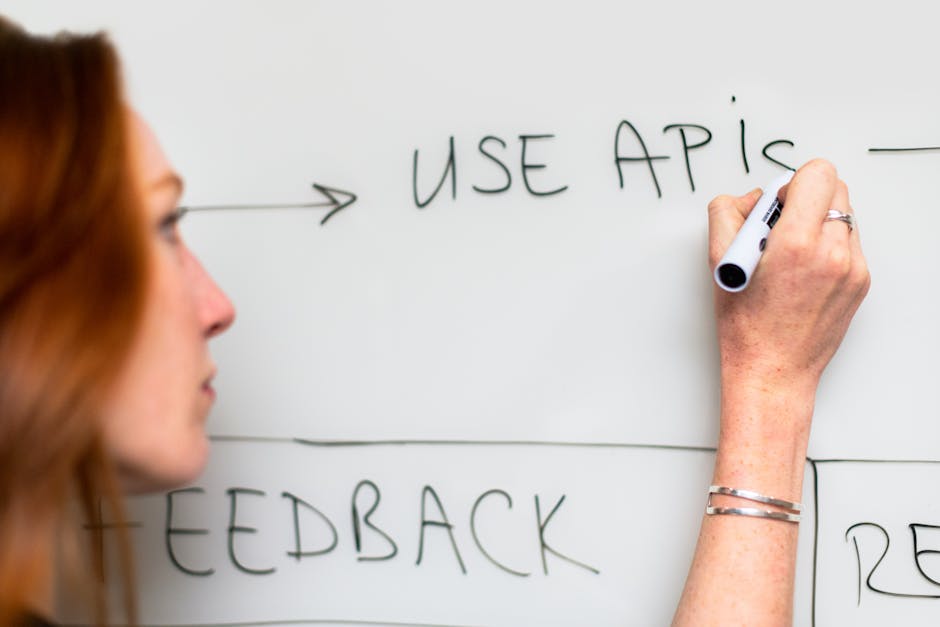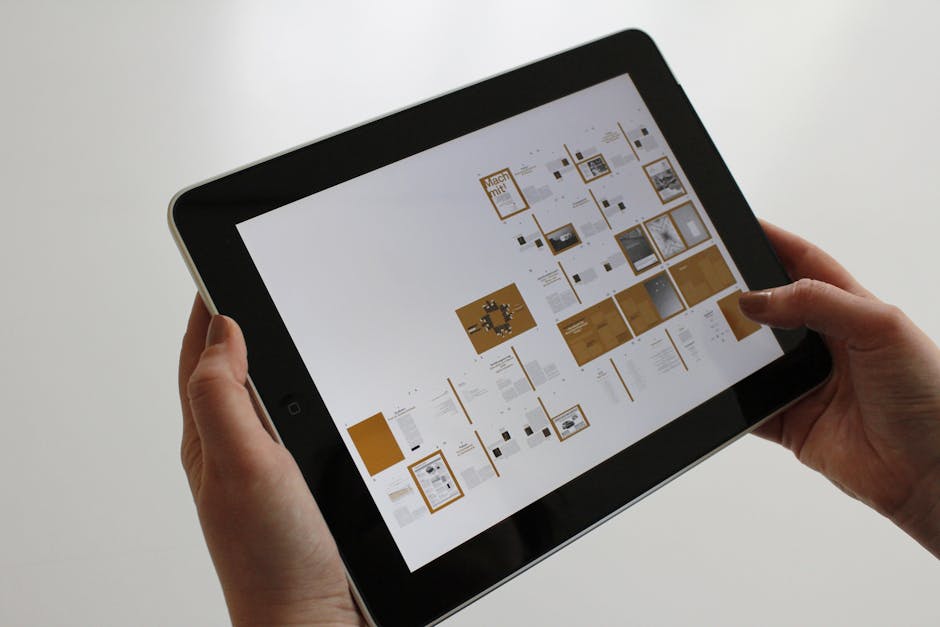Elevate SEO Strategies: Using AR to Enhance Digital Marketing Engagement
Navigating the complexities of digital marketing can feel like wandering through an ever-changing wilderness. As technology evolves, so do the strategies necessary for effective Search Engine Optimization (SEO) and Search Engine Marketing (SEM). Among the innovative tools redefining user engagement is Augmented Reality (AR). By weaving AR into your SEO strategy, you can enhance user experience and engagement, propelling your digital marketing initiatives to new heights.
In this article, we will explore how integrating AR into your digital marketing strategy can transform your SEO efforts. We will delve into the nuances of user engagement, the mechanics of SEO, and practical strategies to harness AR for measurable results. Whether you're a seasoned marketer or new to the field, this insights-packed guide aims to equip you with actionable knowledge to thrive in the digital landscape.
Understanding the Intersection of AR, SEO, and User Engagement

Digital marketing effectiveness hinges on user engagement; the trick lies in capturing and retaining user attention. Traditional SEO strategies have included optimizing for keywords, building backlinks, and ensuring website mobile-friendliness. But with the fast-paced digital ecosystem, marketers have to think outside the box—AR offers a compelling alternative.
AR technology layers digital content on top of the real world, creating immersive experiences. For instance, brands like IKEA have utilized AR apps that allow customers to visualize furniture in their homes before making a purchase decision. This not only boosts engagement but fosters a sense of trust and commitment to the brand, translating to improved SEO metrics.
As search engines evolve, user experience will be paramount. Platforms like Google are increasingly prioritizing sites that marry engaging content with interactive elements. Companies using AR tools can expect higher dwell times and lower bounce rates, both critical indicators of quality that search engines use to rank content.
How AR Enhances SEO Tactics

1. Creating Immersive Content Experiences

AR is not just an add-on; it's a transformative tool. Incorporating AR elements into your content strategy can revitalize static assets, making them interactive. You can transform a conventional blog post about product features into a dynamic AR experience, allowing users to engage directly with 3D models.
For example, an article discussing travel gear could be enhanced using AR to showcase how different items fit into a backpack. When users can visualize and interact with products, it creates a more profound user experience that resonates with them, thereby boosting engagement metrics that search engines value highly.
2. Personalizing User Interaction

Another notable benefit of AR is its ability to personalize user experiences. By integrating location-based AR features, businesses can deliver tailored ads or promotions that cater to specific demographics. For instance, a local restaurant could use AR to present special offers to potential customers as they walk by. Personalized marketing not only drives user interaction but also contributes positively to SEO, as search engines favor sites adapting to user needs.
Consider checking out our article on harnessing hyperlocal trends to shape your SEO and SEM effectiveness—this space is ripe for exploration.
3. Enhancing Local SEO Strategies

When it comes to local SEO, AR can be a game-changer. Businesses can utilize AR for location-aware advertising to attract foot traffic. Imagine a scenario where users, while walking around a city, point their smartphones at a store and instantly see promotional offerings or discounts right in front of them through their screen.
Furthermore, AR can enhance Google My Business listings by providing interactive visuals of the location. This not only enriches the user experience but can help improve search visibility. You can learn more about successful local SEO integration in our article on harnessing AR for local SEO success.
Measuring the Impact of AR on User Engagement and SEO

1. Analyzing User Interactions

After implementing AR in your marketing strategy, it’s critical to track its impact on user engagement. Utilize analytics tools to monitor engagement metrics—this includes time spent on interactive content, click-through rates on AR ads, and user retention.
Evaluating these metrics allows you to fine-tune AR experiences effectively and contribute positively to organic rankings. The more you understand user interaction patterns, the better you can optimize your digital content.
2. A/B Testing AR Features

A/B testing is fundamental in digital marketing and remains essential when incorporating AR. By creating two versions of an AR feature (such as different interactive elements), you can analyze which one garners better results in terms of user engagement or conversions. This data-driven approach can provide insights into how AR optimization could enhance overall SEO performance.
3. Influencing Backlink Strategy Through AR Content

Exceptional AR content can serve as a magnet for backlinks. As users share their engaging experiences on social media, they inadvertently promote your brand, thus generating organic backlinks from other websites and platforms. This enhances your SEO ranking and establishes authority, as more reputable domains link to your AR content.
Consider creating shareable AR content tied with emotional analytics; learn how in our blog post on leveraging emotional analytics for SEO success.
Challenges and Considerations When Using AR

While the potential of AR in digital marketing is immense, there are challenges that marketers should consider. First, the technology can be complex and may require significant investment. Second, user acceptance varies; some users may be hesitant to engage with AR features. Ensuring seamless integration, user-friendliness, and accessibility is essential.
Addressing these challenges involves continuous testing, learning from user feedback, and, importantly, keeping abreast of technological advancements. With the rapid evolution of AR technology, your marketing strategy must be adaptable.
Leveraging AR and AI to Optimize User Experience

As we look to the future, the fusion of AR with Artificial Intelligence (AI) will enhance its effectiveness in digital marketing. AI can analyze user preferences, enabling hyper-targeted AR experiences that align with individual tastes. For instance, AR applications can suggest customized solutions directly tied to user behavior patterns.
The combined power of AR and AI offers an avenue to create next-level immersive experiences that facilitate genuine interactions. For those interested in the connection between AI and user engagement, explore our article on enhancing digital marketing with AI-driven emotional intelligence.
Practical Steps to Implement AR in Your SEO Strategy

To make AR work for your SEO strategy, follow these practical steps:
1. Define Clear Objectives

Define what you want to achieve with AR—whether enhancing user engagement, improving conversion rates, or boosting brand awareness. Having clear objectives will help tailor your AR efforts effectively.
2. Choose the Right Technology
Invest in AR technology that aligns with your goals. Choose platforms that are user-friendly and suit your target audience's preferences. Additionally, consider the devices they use—cross-platform options can enhance accessibility and engagement.
3. Create Compelling AR Content
Content is king, but engaging content is queen in the world of AR. Invest time in creating visually stunning content that invites user interaction while aligning with your brand message. Graphical elements, sound design, and interactivity should work harmoniously to create a memorable experience.
4. Foster Partnerships
Collaborate with experts in the AR field to streamline the implementation process. Partnering with digital marketing agencies that specialize in AR can harness existing expertise, allowing your brand to focus on core business activities while benefiting from cutting-edge marketing strategies.
5. Continuously Optimize and Iterate
Finally, the key to success is continuous optimization. Regularly gather user feedback, analyze performance metrics, and explore ways to enhance your AR experiences. Continuous iteration fosters loyalty among users and propels your brand towards search engine prominence.
Final Thoughts: Embrace the Future of SEO with AR
The digital marketing landscape is ever-evolving, split between traditional SEO tactics and innovative, immersive experiences driven by technologies like Augmented Reality. By embracing AR, marketers can create engaging, personalized experiences that significantly impact user interaction and SEO performance.
As you venture into the realm of AR, remember to keep your audience's needs at the forefront. A well-executed AR experience can not only amplify your brand presence but also foster long-term customer relationships. With sound strategy and relentless iteration, your SEO efforts could thrive amidst the rising waves of digital transformation.
For further insights on improving SEO strategies in a dynamically changing landscape, check out our recent publication on the future of SEO trends and predictions as we navigate together toward an exciting new frontier.





